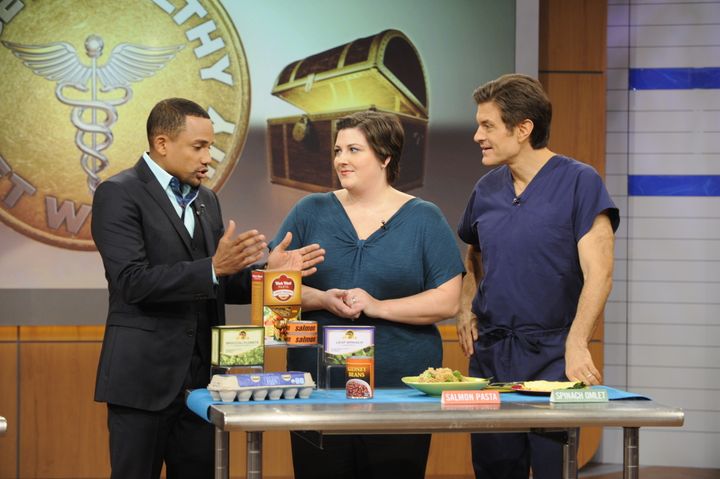
January is right around the corner and while it's as good a time as any to get those physical and financial changes underway, there's no reason you can't get a jump on them now.
Will power is one reason it's hard to do. And with unemployment and obesity rates soaring, African Americans have an even greater set of challenges to overcome.
Dr. Mehmet Oz, preventative health guru and Oprah favorite, and Hill Harper, actor turned wealth guru, have been tackling these issues on their own, but the two linked up yesterday for a segment on Dr. Oz's show, helping audience member, Melissa, learn ways to meet her 100-pound weight loss goal while also putting a dent in her $30 thousand debt.
WATCH:
"When I was dealing with cancer, I was working on a book about finances," Harper told Dr. Oz. "I realized that the same methodology that the doctors were using to cure me, you could use to cure your finances. Health and wealth are so linked it's amazing," he said.
Harper used that theory as the basis for these practical tips on how to accomplish both:
Step 1: The Rule of 15
Improving your health and saving some extra money doesn't have to be a Herculean feat. The goal of the Rule of 15 is to walk 15 minutes a day and shave $15 off your daily spending. By walking 15 minutes a day, you could lose up to 15 pounds in a year. If you pocket $15 a day instead of spending it, this can add up to an annual savings of $5,475. Here are a few suggestions for saving up:
- Eat your breakfast at home, or pack it, as well as lunch, to go. A typical breakfast and lunch will cost you about $13 a day. Not only will you save money, you'll save on calories and avoid hidden salts and sugars.
- Spend less on groceries by passing on brand names. Buy the store brand or generic version instead. In many cases, this can save you about $2 per item. It might sound small, but it all adds up.
Step 2: Skinny Foods Equal a Fat Wallet
Tons of nutritious foods cost less than $2. Think of stocking up on whole wheat pasta, frozen veggies, eggs, canned beans and canned salmon (a good source of omega-3s). Even with this simple list of foods, you can make great meals for less: salmon pasta with veggies or a simple spinach omelet.Step 3: Volunteer
Giving your time to others may not sound like the direct path to a better-looking bank account and improved health, but it's an important step in the right direction. Research shows that those who help others live healthier lives, including having a lower risk of heart disease and depression; volunteering may even improve longevity. As a positive side effect, happier people are less likely to binge on food or spending. Volunteer twice a month; mark those dates in your calendar and keep those appointments.